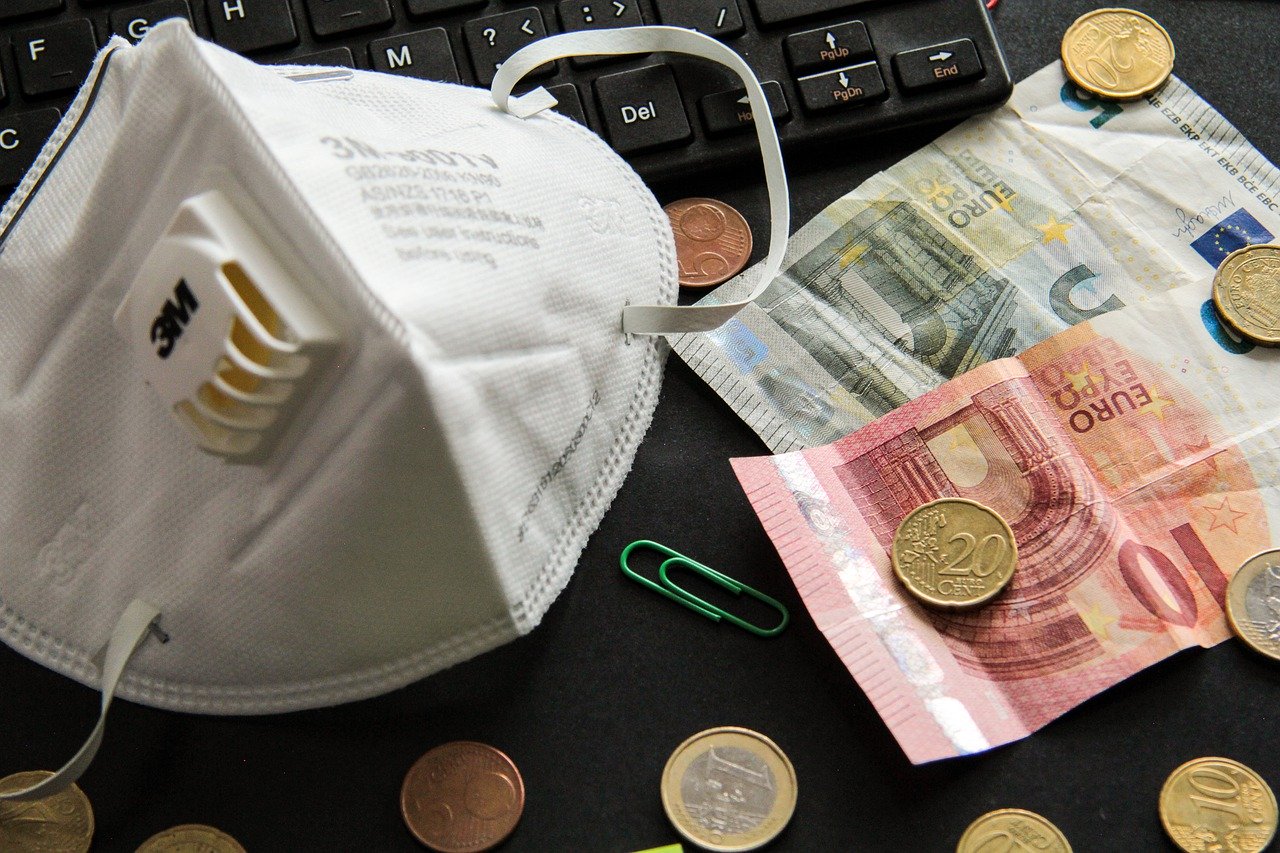The economic chaos brought about by the coronavirus pandemic is exceptionally distressing. It had forced countries to go on lockdowns, businesses have closed down, even the stock value of big companies have reached all-time lows.
Fortunately, while there still is no way of telling how long this outbreak will take, we are already seeing significant improvement with the government’s efforts to flatten the curve and control the rate of infection.
In fact, we are starting to see businesses reopen and people slowly starting to go back to their normal way of life. If you are reading this article right now, then chances are you are a business owner yourself, and you are already preparing to reopen your doors again.
After all, getting the rate of your profit back to normal is the best way to protect yourself financially from the impact of the coronavirus. Well, allow us to help you out with this quick guide. Let’s get started!
a. First things, first
 Before you start reopening your doors, there are a number of steps that you must consider first.
Before you start reopening your doors, there are a number of steps that you must consider first.
1. Government updates
What does the state or federal government have to say about the nature of your business? Is it already permitted in your business or office location to reopen and resume operations?
Establishments that they have deemed essential (such as hospitals, pharmacies, and groceries) were not closed down. In fact, they were even required to stay open and continue their service to people.
On the other hand, they have enforced strict guidelines for non-essential businesses to follow.
2. The need for reopening
Regardless of your business is essential or non-essential, though, is no question. You can still continue your operations if you can find a way for your employees to work remotely.
The reason why non-essential establishments were closed down, after all, is to force people to stay indoors and keep them safe. And it is not just for your employees but your patrons too.
Hence, if you can find a way to make your employees work remotely and conduct your dealings online, then it is absolutely fine. In fact, that is what we recommend you do before you resume the physical operations of your business.
Get your records up to date. Review your inventory. Follow-up on your employees’ health. And most of all, perform your risk assessment.
b. Assessing the risks
Speaking of risk assessment, that is what we are going to talk about next. Here are the following steps that you should take:
1. Identify the hazards of your location.
Does your office have common rooms where more employees congregate? Does it have a receiving area that gets more traffic from outsiders compared to other rooms? Do you run a store that receives a lot of guests?
2. Determine who among your employees are more at risk.
The U.S. Department of Labor Occupational Safety and Health Administration (OSHA) has created a handbook that includes risk levels according to different job classifications. According to OSHA, there are four different risk levels:
3. Low risk.
These are employees that are not required to have a lot of contact with the general public. In fact, they don’t necessarily need to be in close proximity to their coworkers.
Your warehouse workers, for instance, don’t really need to come in close contact with customers, and they can still continue their work even while still maintaining a distance of six feet from their coworkers.
4. Medium risk.
These are employees that are not required to have a lot of contact with the general public, but they also can’t do their work properly without being in close proximity (less than six feet) to their coworkers.
For instance, those who have clerical positions don’t really come in direct contact with the general public, however, due to the distance of their work cubicles from each other, they won’t be able to avoid close contact with their co-employees as well.
5. High risk.
These are employees that are required to have a lot of contact with the general public. These are sales ladies, couriers, healthcare assistants, and more. Because of this, they are already considered as front liners.
6. Very high risk.
These are employees that are required to have a lot of contact with people who are highly suspected of the disease. These are doctors, nurses, lab technicians, morgue workers, and more.
7. Assess the risks.
Now that you have properly identified the hazards and the risk levels of your employees, it is time to assess the data.
How likely are the risks possible to occur? What are the possible consequences should those risks happen? What are the steps that you can take to lessen the risk?
Are the benefits worth the risks and possible consequences?
c. Risk control
After your thorough risk assessment, the next thing that you need to do is to perform risk control. You have three choices in order to resume your operations:
- Risk Avoidance. You can completely avoid those risks by allowing your employees to work remotely and restricting your business dealings online.
- Risk Control. You can reopen your business with strict risk preventive measures, which we are going to talk about in a bit.
- Risk Transfer. You can hire freelancers or a third-party company and outsource your business operations. In this way, you will be able to keep your employees safe and still resume your business operations.
d. Prevention and preparation
 Decide on what type of risk control you are going to pursue in order to proceed.
Decide on what type of risk control you are going to pursue in order to proceed.
Should you choose the second option, though, then here are the things that you can do in order to prepare for your reopening and prevent the disease from spreading as much as possible.
1. Sanitize
Disinfect your entire office or store. You can hire the help of a professional cleaning company to make sure that every room, surface, and equipment is free of disease-causing contaminants.
Improve the indoor air quality of your workspace as well. Clean air filters. Get air movers to ensure proper ventilation.
2. Deal with employees
After disinfecting your establishment, it is time to follow-up with your employees. Don’t allow the sick to go to work. Create strict guidelines for your employees to follow.
For instance, ask them to practice social distancing. Discourage them from touching other employees’ equipment (like phones, desks, and other office tools), and if possible, ask them to disinfect all of their tools after each use.
That being said, you must also distance their cubicles or desks (if possible, at least six feet away from each other), and build sanitation stations with free and unlimited access to disinfecting wipes and alcohol-based hand sanitizers.
You can also decrease the number of your employees at any given time by creating multiple shifts and make an effort to minimize their contact with each other. For example, you can host meetings online, instead of performing them in person.
3. Provide personal protective equipment
Provide personal protective equipment (or PPE) such as disposable face masks and clear plastic sneeze guards, especially for employees that can’t avoid contact with the general public. It will go a long way towards disease prevention.
4. Deal with customers
Those in the hospitality and retail industry are particularly at risk since they deal with customers all the time. Hence, you should also include them in your policies.
Have an employee check the temperature of all the clients who come into your store. Don’t allow people who are sick to get in. Don’t allow those who are not wearing a face mask as well. Control the number of people inside your store at any given time.
For instance, only accommodate five to 10 people at a time depending on the size of your establishment. Remind them to practice social distancing protocols and if possible, provide visual guides for them to follow.
For instance, you can mark your cashier line with tape to help people gauge how much they should distance themselves from each other while paying. Finally, don’t forget to provide sanitation stations and hands-free disposal bins for your customers as well.
Conclusion
We understand that most of the steps that we have provided above are not easy to follow. They also require a lot of resources in order to enact.
However, remember that they will benefit your business, your employees, and your customers greatly as we all face this global pandemic together.
This health threat is not permanent. We strongly believe that a coronavirus-free future is almost at hand. For your quick reference, here are the points that we have discussed above:
- You must always keep yourself informed with related updates from the government regarding business procedures in your area.
- Performing a thorough risk assessment will give you invaluable insight into the safety hazards that you can expect to face so you can prepare for them accordingly.
- Each employee is exposed to different risk levels. Their level will give you an idea of how to lessen the health hazards that they are going to face.
- Disinfect your entire establishment. Clean all surfaces and office equipment thoroughly. Don’t forget to improve your indoor air quality as well!
- Keep your employees well informed on your updated COVID-19 policies and provide them with PPE, sanitation stations, and more.
- Encourage your customers to follow the same safety protocols as well.
By keeping these tips in mind, we are sure that your reopening will run smoothly without any casualties. Good luck!
Jim Hughes is a content marketer who has significant experience covering technology, finance, economics, and business topics for about 3 years. At the moment he works as content manager in OpenCashAdvance.com
